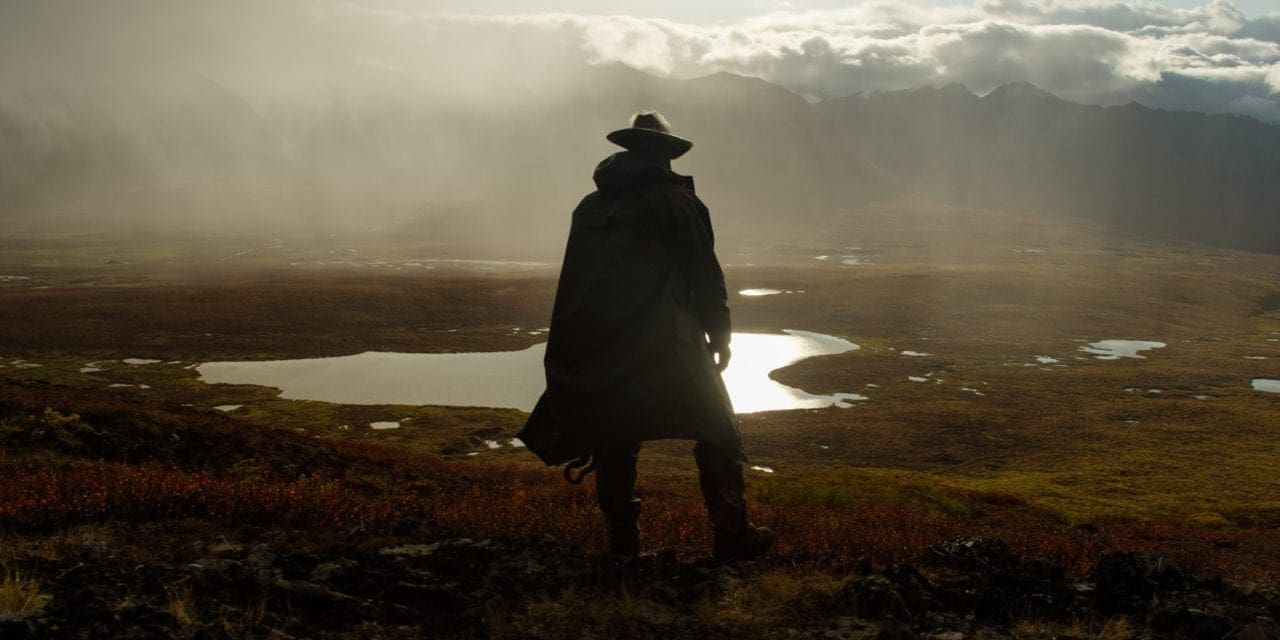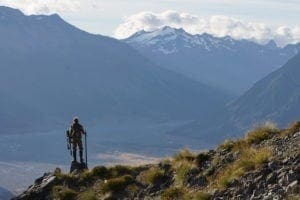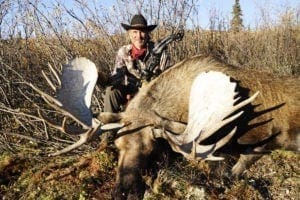Jim Shockey on Hunting Challenges and Favorite Species and Destinations

To win the Weatherby Award, Jim Shockey had to hunt the most species in the most destinations. As we told you in the our first segment of our interview with Jim Shockey, his love of hunting and his lifetime pursuit of that simply has been a way of life for him without consideration for awards. Jim Shockey has taken a whopping 367 of the species recognized by Weatherby Foundation International. And he’s credited with hunting 50 countries, some multiple times. But you’d be surprised at some of the species he’s hunted or would still like to hunt and what his favorites are. Some of them aren’t even listed in a single record book, much less for the Weatherby Award. HuntingLife’s Executive Editor Barbara Crown has the story below.
Barbara Crown: The Weatherby criteria requires that the winner must have taken the largest number of the most difficult species in the world from all continents. You say Weatherby has credited you with 367 species and 50 countries. Of all those species which one or two were the most difficult/challenging for you to collect and why?
Jim Shockey: I’m going to segway this a little bit. The initial question of how many have I taken and how many countries, those are the species listed by Weatherby. I’m not really sure how many there are, I think legally free-range, not high-fenced species, if you took a census around the world there are probably 390 to 400 species that you can hunt legally on any given year, depending on countries opening or closing. But these are only the species listed by Weatherby, there are lots of others that can be hunted that are not listed by Weatherby.
For example, the European roebuck in Asia. You can go on the Asian side of the Ural Mountains in Turkey for instance, where you find the European roebuck. But that is not listed as a Weatherby species even though it is legal to hunt and definitely a species. So, the Weatherby criteria is not all-encompassing. It is their list that they compiled. You won’t find the black and rufous Sengi elephant shrew on the list, but you will find it on Zanzibar.
You can go down to Tasmania and hunt the pademelon, which is basically a small kangaroo, and the Forester kangaroo. People don’t realize they kill thousands of them every year. They are relatively big animals and are not on the Weatherby list, but you can go down there and hunt them with the locals. It’s legal and on the hunting license. So, I want to make it clear that the Weatherby list is not everything in the world. Nor is the criteria of the most species the only criteria for the Weatherby. It only accounts for a percentage of the criteria. This is just the background to answer your question.
The most challenging animals to me are the ones I never got. The zebra duiker in Liberia, for instance, where I spent 17 nights in the jungles of Liberia just before the Ebola outbreak a few years ago, and I never saw one. That is a very challenging animal. Other animals include the striped hyaena in Tanzania. I also had a license for them in Somaliland. I’ve probably spent 200 days on striped hyaena and have never taken one. Part of the reason is because the laws say you can only hunt them in day light and they are mostly a nocturnal animal. There is a challenge that is made greater by the law, which is great. It is an extremely challenging species to hunt when you play by the rules and abide by the law.
Barbara Crown: Wow, that’s so not the kind of answer I was expecting. I thought you might say markhor in Pakistan or tahr in Nepal. It’s interesting you would name zebra duiker and striped hyaena, because only the few people who have suffered the West African rain forest to come up empty on zebra duiker understand the challenge you’re talking about. It’s a tiny animal, but the sweat equity that you literally put into that species is something most hunters are completely unaware of. And I don’t think most hunters would put the equivalent of half a year into chasing a hyaena.

So, let’s talk about the challenges of the many destinations you’ve hunted. Which country or area was the most challenging for you and in what ways was it challenging?
Jim Shockey: To pick one out of the whole world is difficult because they are challenging for different reasons. Getting the animal is such a tiny part of what hunting is about. But to be able to go in there legally, safely, get out safely, and get the animal home as well – that can be a challenge.
Sometimes it’s a physical challenge. Hunting for markhor along the Karakorum Highway in Pakistan is absolutely one of most dangerous and hair-raising, technical climbing hunts you’ll ever do. So that’s challenging physically.
Sometimes it’s just mentally challenging, like not getting a polar bear in the arctic after 23 days and knowing that you have to go back and do it again in severe conditions. The first time I hunted them was in February when it’s dark most of the day. Average temperatures were 40 below, and with wind chill it was more than -100. The skin freezes in a second if it’s exposed. Even one tiny crack in your outer gear will let cold air in, and you know it. Again, it’s more of a mental challenge when you have to go back there, knowing you were kind of dying the first time. And now you have to go back because of your desire when it’s really a lot simpler to just sit at home on the couch and watch the football game. That is a mental challenge.
There are so many things that could make a hunt challenging. Maybe you’re injured, so there is a physical disability challenge that makes a very memorable trip.
Then there are countries where you have to do some soul searching ahead of time. You may be going to a place that is politically unstable. Do you really want to (a) put yourself in jeopardy? and (b) do you really want to do that to your family? My long-suffering spouse Ouisie (Louise), is the one that stays home when I go to these countries. I’m there knowing what’s going on, while she’s at home worrying. So ahead of time, that to me would make a country challenging, when you’re facing that difficulty in decision making.
You may be first into a given country, nobody has been there for 30 years, there’s insecurity on the ground when you go in, such as in Congo, Somaliland or Iran. I was in Iran the first time in 2004, and those were really unsettled times. Even going into China back in 2004, in Pakistan going into the KPK Province, and to Chad. I had to do some serious looking within myself. These are places that you have to do some soul searching ahead of time because of the safety and what you’re going to put your family through if it doesn’t turn out well. We’re talking about people issues not the safety issues you usually think about on a hunt, like animal charges and things like that. That’s just part of what we do. The countries with serious people issues are the ones that are most challenging for me. That said, there’s not really a country I’ve said no to in the end. So soul searching is one thing, but then the motivation to go for me, the challenge of facing that fear, and my desire to go into these countries always won over watching the football game back at home.
But honestly, for me it’s not the most “challenging” hunts that stick out. The most memorable animals and hunts are the ones where my family members were there. Hunting in New Caledonia for Java rusa deer with my father and son is one of those hunts. I’m probably going back 20 years, but I remember it like it was yesterday. It’s not record books or how big an animal was that makes a hunt memorable. It’s difficult for me because I don’t like to qualify an individual animal that way. Every animal you’ve ever taken was a life and is a significant responsibility. It diminishes the intrinsic value of that animal’s life when you think about it a certain way. Each one is as important as another and, for me, just as memorable for various reasons.
Barbara Crown: So, as a hunter who has chased hundreds of animals from a little shrew in East Africa to a towering polar bear in the arctic, and experienced hunts in every possible terrain and condition, which is your favorite species to hunt and why?
Jim Shockey: My favorite big game animal to hunt is moose. Largely because I grew up eating moose meat. If we didn’t get a moose in a given year, we did not eat meat that winter. I swear I didn’t know you could buy a cow until I went to college. So, I’ve always had a special place in my heart for moose. That said, if I could only hunt one big game species for the rest of my life it would be whitetail deer.

Again, I think because it is part of our tradition. I couldn’t hunt moose until I was 16, but at 14 I could hunt whitetail. I hunted with my Dad 43 years and with his dad before he passed away. We hunted every year for whitetail. It’s not an expensive expedition; they’re challenging; they take a measure of skill to go after; and they’re fairly common. So, it’s not like you will spend weeks and weeks and not see something.
Barbara Crown: There’s a lot of North American hunters reading this who are saying, “Yes! Jim Shockey’s with me on this one!”
Jim Shockey: (Laughing) The Weatherby award is a crowd of international hunters, so there are people in that group that have never really hunted whitetail deer. These are my roots. I’ll never deny my roots or act like anything other than what I am. I am just a hunter. Whitetails are fun to hunt and most of us grew up hunting them.
Barbara Crown: In Europe many hunters would say roe deer, which I think is comparable to what whitetails are in North America. They would hunt roe deer over and over and over again and be very happy doing it. In Africa, hunters often tell me it’s kudu or bush pig. Every region has one of those species that is endemic and ubiquitous, and hunters feel the same way because they grew up hunting it. It’s in their blood, it’s challenging, and it’s right in their backyard. If it were the only species they could hunt the rest of their life, they would be OK with that.
Jim Shockey: There is an allure to challenging yourself, asking what is over that next mountain, across that next valley, in that next country. How do they hunt them? What do they look like? What are their habits? What is the habitat like? And then just getting there. That’s all cool, but a good hunt with your family for a whitetail in North America, or a roebuck if you’re in Europe, or a bush pig in Africa, well there’s a lot to be said for that kind of hunting. I suspect that many, if not all, of the other Weatherby winners would say the same thing.
It’s wonderful spending a lifetime exploring the world and going on these exotic expeditions to remote places, but when you break it right down, hunting for the local species you grew up hunting and that you have the knowledge and the tradition of that species going back decades and generations within your own family, and you can enjoy the family camaraderie doing it… that’s probably exactly how all Weatherby winners would answer even after winning the award.
Barbara Crown: OK, so how about destination? Which country or area (outside of your home) is your favorite or your most memorable hunting adventure and why?
Jim Shockey: Some of the most beautiful and memorable places I’ve hunted include the Himalayas, Kyrgyzstan, the Karakorum Mountains in Pakistan, the South Alps in New Zealand. There are other areas, such as the Omo Valley in Ethiopia.
Louise is not a hunter and never has been. She was a vegetarian when we met 44 years ago. She asked me if there is one place that I’ve seen that was maybe a little rougher than what she typically likes to do but that would be one she could go see with me. I said the Omo Valley. She actually came with me. We set up a trip. It was really a magic place. This would be 15 years ago. It was truly the last frontier in Africa. When Ouisie and I were there it was inhabited by the Hamer tribe. Now a lot has changed with the Asian investment in there. They built a damn on the Omo River, there’s literally a 20,000-person town now.
But I once told Louise that the Yukon is the most beautiful place in the world. In the fall, during the last couple weeks of August and first couple weeks of September, there is a spot I go to every year where I can see 30 miles each way. As far as you can see the mountain birches are turning crimson in stark contrast to the higher mountain areas with yellow runs of willows, and then where the mountains go white. It’s a magic place and the most beautiful place in the world to me. No place speaks to me like the Yukon.
Editor’s Note: We’ll have more on Jim’s thoughts about hunting ethics, fair chase hunting and the place of record books in our next segment.
